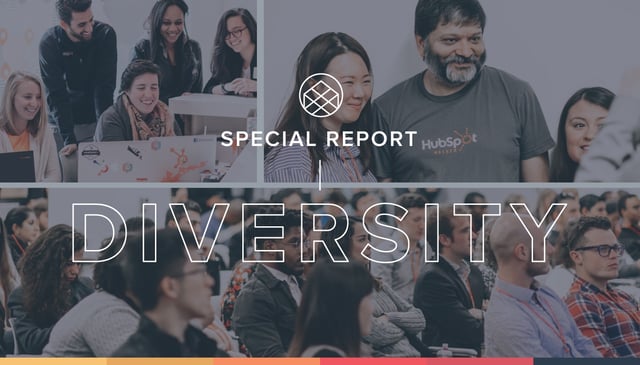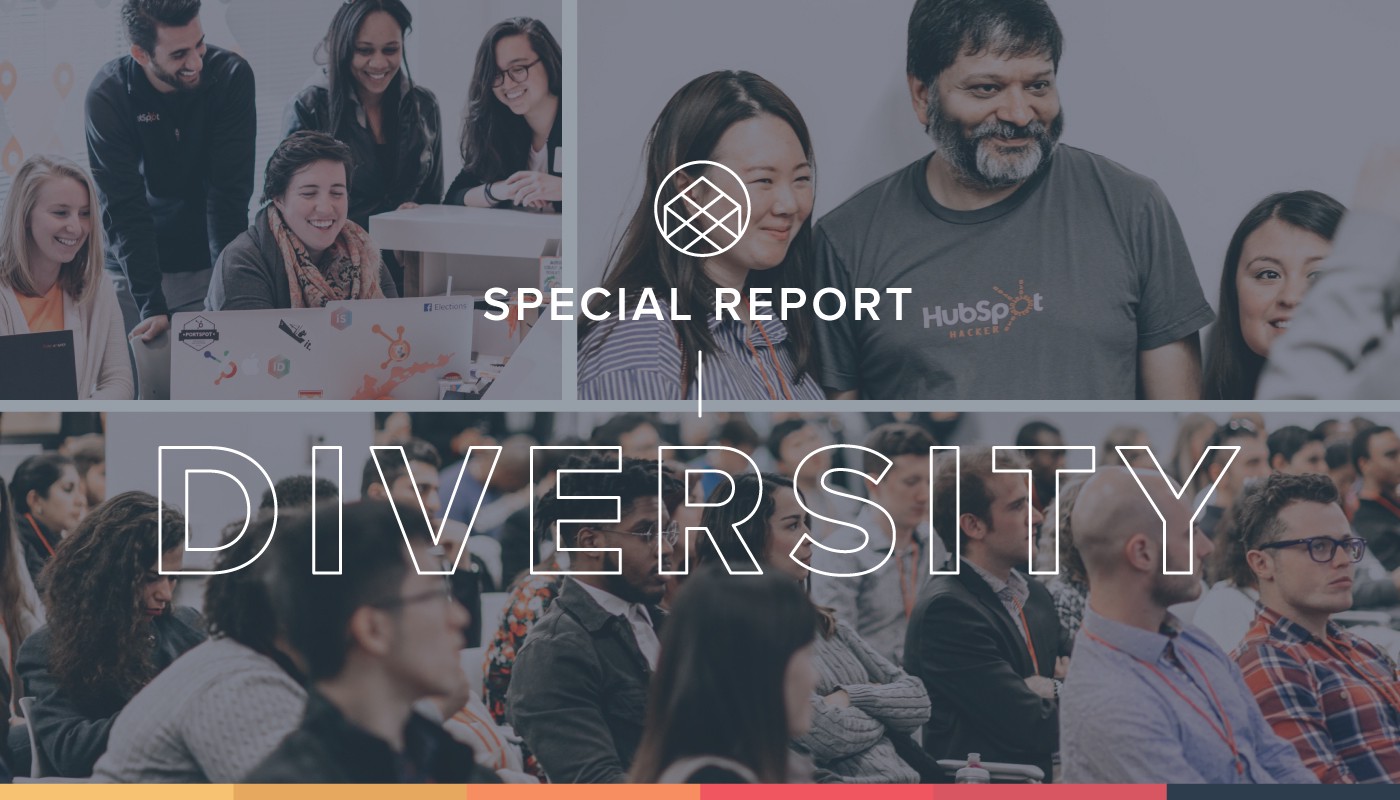
Over the course of HubSpot’s 10-year history, transparency has been a core tenet of the company’s culture. From publicly publishing our Culture Code to encouraging employee discussion on the internal wiki, we’ve sought an open atmosphere at HubSpot. As a part of that, diversity in the workplace is something we’re focused on, and we think the conversation is just as valuable to have externally as it is here at HubSpot.
So in that spirit, today HubSpot published its 2016 Diversity Data, detailing the company’s diversity in leadership, ethnicity, and age. HubSpot is addressing its approach to diversity (and inclusion) head-on with another core tenet – humility – as we acknowledge there’s much more work ahead as we continue building a next-generation organization.
“At HubSpot, we’ve defined diversity as the current snapshot of representation by demographic, which is important,” said Katie Burke, VP of Culture & Experience at HubSpot. “But equally important is how inclusive HubSpot feels to someone each day they come into work. Our goal is to put the right programs in place to ensure we’re solving for that second half of the equation, as well.”
Data is only good if you do something with it, so HubSpot has identified initiatives that will help the company continue to improve diversity and inclusion over the next year, and Katie has provided more specifics around those initiatives in a post on ThinkGrowth.org.
Here’s a quick snapshot of where things stand today:
Where Things Stand: The Data
- Across the organization, our gender breakdown is 60% male and 40% female. On the leadership team, those numbers are 68% and 32%, respectively.
- The majority of our employees (60%) fall in the 26-35 age bracket. 16-25 year-olds represent 29%, 36-45 represent 8%, and 46 and over represent the final 3%.
- 15% of employees are part of a minority group – the other 85% identify as white. Those numbers are 8% and 92%, respectively, among senior leadership.
- 6% of new hires in 2016 were Hispanic, compared to 4% of our total population. 7% were Asian, compared to 5% of our current population.
- 32% of HubSpotters in leadership roles are female, a 7% increase since 2015.
Where We Are Headed: The Plan
- We’ve introduced two new programs that will increase the number of ethnically diverse and female candidates and provide senior leaders with the budget flexibility they need to compete for top non-majority talent at the director level and above.
- In addition to forming the global People of Color at HubSpot (POCaH) support group and launching a mentorship program for employees of color, we’re also supporting a number of initiatives that aim to diversify both the ethnic and socioeconomic composition of the technology industry by encouraging students and recent graduates to consider careers in the field.
- In an effort to attract more experienced professionals looking to grow their careers, we delivered training across the organization on how to make job descriptions significantly more inclusive. We’ve also tweaked the language we use on our Jobs page to reflect our interest in attracting both emerging and experienced professionals alike by focusing on benefits that go deeper than free beer and ping-pong.
- In 2016, the company sponsored major Pride initiatives in Boston and Dublin, and also hosted an event for all LGBTQ interns and allies in the greater Boston area. HubSpot will continue to invest in and expand its support for LGBTQ employees, candidates, and communities in areas where it does business.
For more information, check out Katie's ThinkGrowth.org post and the full deck on SlideShare.
We're looking for remarkable candidates to join the HubSpot team. Do you fit the bill, or do you know someone that does? Check out our open positions and apply here.

